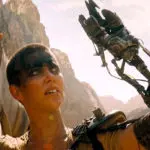As with every other medium under the sun, it can be said that cinema has often failed to do right by people with disabilities. Though characters with disabilities have often been at the center of award-winning, critically acclaimed films such as Rain Man, I Am Sam, and My Left Foot, more often than not, films end up using such characters in demeaning ways that send appalling messages about what is to live with a disability.
Michael Baginski, writer and events Co-Chair for The Freelance Solidarity Project, has autism and finds that films have a habit of making autistic characters super-powered or “the butt of the joke,” like in The Predator, where a child is able dechipher an alien language because of his disability. “The sort of representation I want to see,” Baginski says, “are ones where the creators represent who I am, so that can be reflected onscreen.” He argues that people with autism should be part of the creation process for film and shows centering on the experience of autism to make them more realistic or productions should not be made at all.
Ethan Poe, who also has autism, shares a similar sentiment. “I generally feel like autism is easily used as a plot device to some sort of problem than it is a sincere effort to understand a large swath of people.”
Baginski isn’t alone in his frustrations with how people with disabilities are often portrayed on screen.
“Most of the stories [in film] involving disability are predominantly about the negative concepts of disability,” says accessibility consultant and streamer Vivek Gohil, who lives with Duchenne Muscular Dystrophy and Haemophilia. “Also, films seem to think paralysis is the only disability out there. There’s a whole range of disabilities to choose from, representation would explore the different perspectives of people living with different conditions. Teach the audience that a disability doesn’t make everybody the same.”
Our own COO Steve Spohn has written at length about the problem with writers creating characters with disabilities and not doing the barest bit of research for authenticity or even imbuing those characters with positive takeaways for audience members who may have similar or even the same disability.
A quadriplegic man “sacrificing himself” so that his love can live “a better life” isn’t a heartwarming sacrificial moment, it’s a heartbreaking confirmation of our worst fears. Because our culture is so heavily rooted in Hollywood, young quadriplegic people could see this movie where the “hero” commits assisted suicide as confirmation that the demons in their head might be right. Maybe life isn’t worth living. Maybe the burden is too great.
So, I’m here to ask you, aspiring writer, please don’t make the same mistakes. If you’re going to write about a minority or disability, do the same level of research you would do about a foreign land or a subject you have never personally experienced. Realize that you could accidentally be playing into the fears of a group you’re trying to support.
Please remember that people with disabilities are not plot devices.
Luckily, the tides are changing and representation is improving – across all genres. For Gohill, Max Max: Fury Road’s Furosia is a ‘brilliant’ example of how to create a great character with a disability where all the narrative focus isn’t on their disability. He also praises the use of sign language in The Mandalorian. Poe says that Max Mayer’s 2009 film Adam does a good job portraying the condition with all its ups and down. Obviously these films aren’t definitive proof that Hollywood’s fixed its problem with giving characters with disabilities their due (because it hasn’t). However, they do show a general inclination toward progress, as was the case in the late 20th century, when at long last films began to explore sexuality and race with more nuance than ever before with the likes of Look Who’s Coming To Dinner, Harold and Maude, and My Own Private Idaho exploring fraught subject matter in fascinating, if flawed ways. As the subject of disability and accessibility become more widespread, day-to-day topics, it is this writer’s hope that the portrayal of characters with disabilities follows along the same trajectory as aforementioned movies and those portrayals become more nuanced and, more importantly, creatively managed by people who have those disabilities themselves.
But just what does that future look like? What do those with disabilities want from cinema with characters with disabilities? “I would love to see disabled characters be bad or represented as sexy,” says Yeehee Perry, who has cerebral palsy. “I’ve jokingly been told many times by my friends that I should take part in a heist because no one would suspect me to be one of the perpetrators. As funny of an idea as that is, that sounds like a great story. If not that, then can we be represented as a sexy character for once? It would be nice for media representation to reflect disabled people as more diverse humans that have desires, less than wholesome motives, and varying outward appearances instead of a cookie-cutter sweet character.”
Ethan Poe says he’d like to see more slice of life stories with characters with disabilities. “I just want my life represented, warts and all.”
As we lurch headlong into a future where creators from all kinds of backgrounds are being given more power thanks to crowdfunding and digital services like Netflix, I can only hope that wishes of Poe and the rest of the disability community get the representation and creative advocacy that is deserved.
Javy Gwaltney is a publicist working with Private Division and other fantastic clients. He was once a Game Informer editor and spends most of his time writing words or thinking about replaying Mass Effect. You can find him on his twitter or his website.


